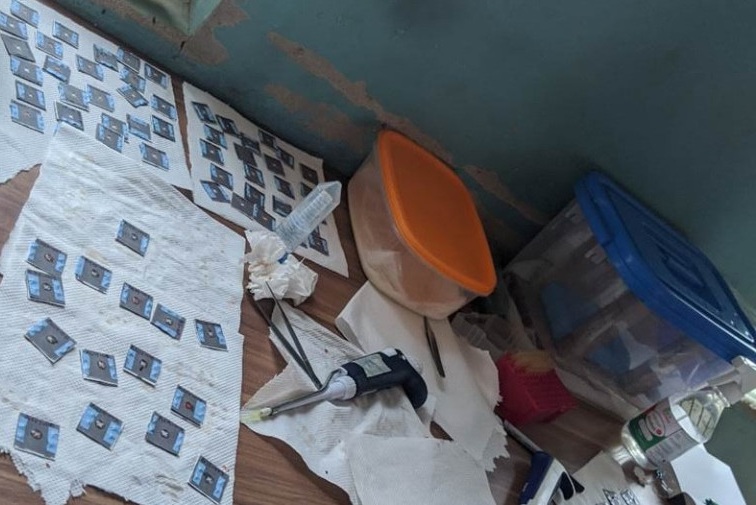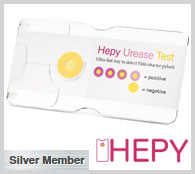Paper-Based Devices Outperform Existing Methods in Diagnosing Asymptomatic Malaria
Posted on 17 Jun 2025
Malaria is transmitted through the bites of mosquitoes that carry infectious parasites. According to estimates from the World Health Organization, in 2022, there were 249 million malaria cases worldwide, with approximately 608,000 deaths. A vaccine to prevent malaria is now being administered to children in Ghana, a country where over 25% of the population was infected in 2011, dropping to 8.6% by 2022. However, wider vaccine coverage has led to a reduction in natural immunity, which makes continuous monitoring of potential infections in sub-Saharan Africa crucial. Now, researchers have developed simple paper-based devices that have outperformed two standard testing methods in identifying malaria infections among symptom-free individuals in Ghana. This diagnostic breakthrough, published in Analytical Chemistry, could play a key role in advancing malaria elimination efforts.
Deceptively simple in appearance, the devices developed by researchers from The Ohio State University (Columbus, OH, USA) trigger chemical reactions between a small drop of blood and embedded molecules within layers of paper. The diagnosis is then made using advanced, yet portable, equipment: a mass spectrometer that detects the presence of a malaria-specific antigen, which would activate the immune system. Initially introduced in 2016, the device was designed for use at home or in remote areas and can preserve biological samples for extended periods without refrigeration. Since then, the researchers have enhanced the device by automating the storage of antibodies and ions in a 3D format and incorporating a multi-functional molecule to amplify the detection signal. Still, the assembly process remains manual. The layered paper sheets—treated with wax to control blood flow—are produced individually and assembled with double-sided tape. One 8x12-inch sheet can accommodate 25 devices.

When a blood sample is applied, it is divided into four chambers—two for control purposes—and initiates a series of chemical reactions as it travels through the layers. The researchers developed ionic probes to bind with antibodies that extract the malaria antigen from the sample and affix it to the paper within around ten minutes. After applying a buffer wash, the paper layers are separated and held in front of a handheld mass spectrometer. This device determines the mass of the target compound, and the presence of a specific molecular weight signifies the malaria antigen, confirming infection. If no such mass is found, the result is negative. Results are typically available within 30 minutes, and the used devices can be stored long-term without refrigeration for future analysis. This durability means the devices can be mailed in standard envelopes, enabling testing in remote parts of Africa with minimal infrastructure and without requiring cold-chain logistics.
In a five-week field study conducted in 2022 in Ghana, the researchers evaluated the device’s performance in 266 volunteers who showed no malaria symptoms. They compared the outcomes with three widely used malaria diagnostic methods: microscopic blood analysis, commercially available rapid diagnostic tests, and PCR (polymerase chain reaction). For asymptomatic individuals, detecting infection is particularly difficult because the parasite count in their blood tends to be low, necessitating highly sensitive diagnostic tools. In the study, microscopy—the standard in many African hospitals—produced the fewest positive results at just 24. Rapid diagnostic tests identified 63 infections, PCR detected 142, and the paper-based devices found 184 positives.
When the sensitivity of each method was calculated—defined as the number of true positives divided by the total of true positives and false negatives—the paper-based device achieved a sensitivity of 96.5%. In comparison, microscopy and rapid diagnostic tests showed sensitivities of 17% and 43%, respectively. Out of the 266 samples tested, 47 returned false positives using the paper device, all of which microscopy and PCR confirmed as negative. The researchers suggest that these false positives might have resulted from differences in blood viscosity, which could have altered the blood’s distribution during the washing phase. To address this, they made design adjustments to the device and have initiated discussions with Ghanaian authorities about deploying it as part of a national testing program. In addition, the team is working with clinicians at Ohio State to adapt the technology for detecting markers linked to conditions such as colorectal cancer and acute pancreatitis.
“Typically you would take the sample to the lab, but now we are taking the lab to the sample – I’m taking it to Africa, one of the remotest parts of the world, and doing the analysis right there,” said Abraham Badu-Tawiah, lead author of the field study report and professor of chemistry and biochemistry at The Ohio State University. “I have the hammer now and I could hit different nails. All we have to do is change the antibody to make it applicable to other diseases.”
Related Links:
The Ohio State University














